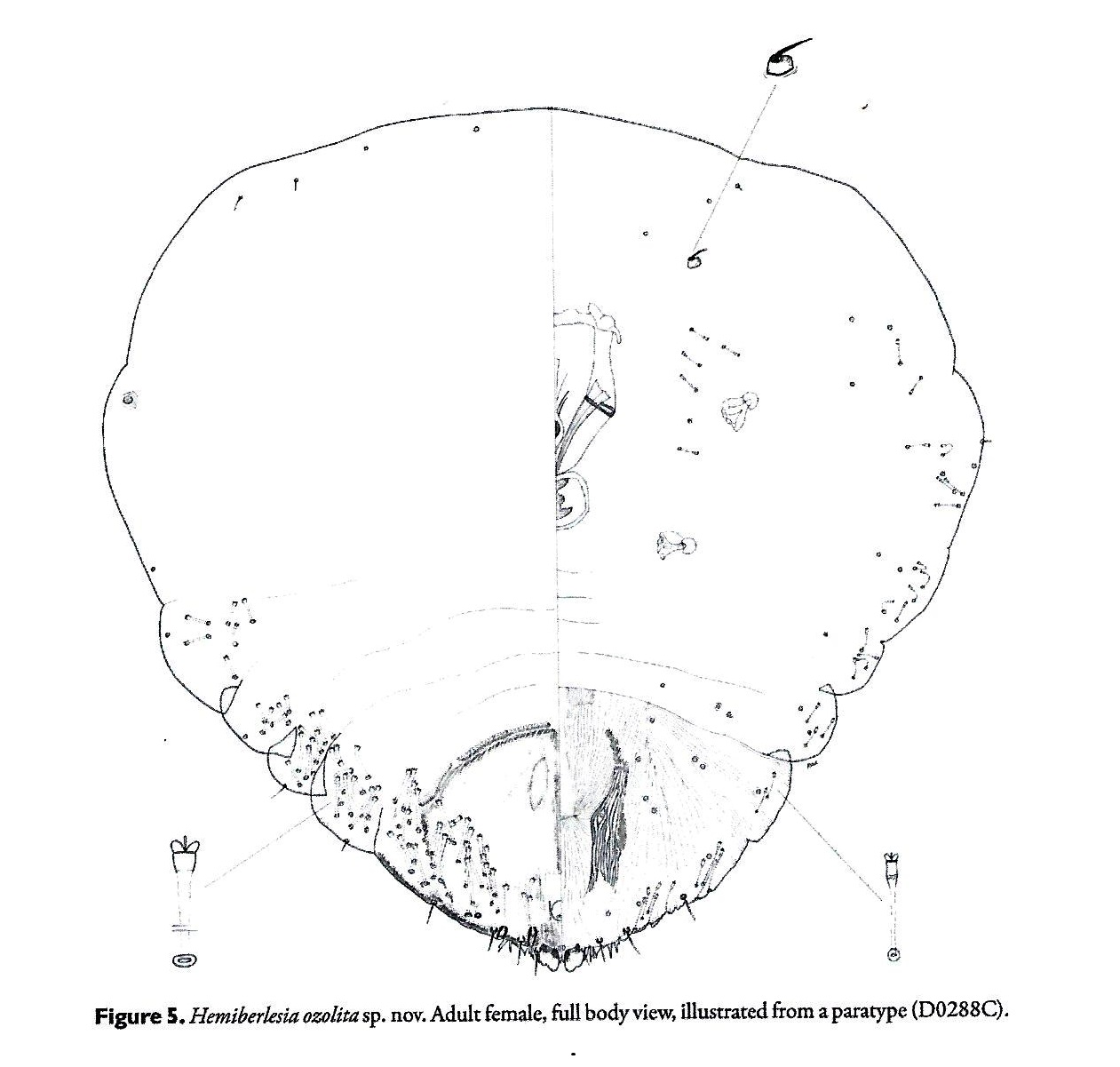Valid Names Results
Hemiberlesia ozolita Schneider, Claps, Wei, Normark & Normark, 2020 (Diaspididae: Hemiberlesia)Nomenclatural History
- Diaspidiotus undesc #1 Morse & Normark 2006. unavailable name that is placed
- Diaspidiotus sp nov 1 Andersen, et al.. 2010. unavailable name that is placed
- Hemiberlesia ud0288 Schneider, et al. 2018. unavailable name that is placed
- Hemiberlesia ozolita Schneider, Claps, Wei, Normark & Normark 2020. Type data: ARGENTINA: Jujuy, Humahuaca, camino a Aparzo; (23.20S, 65.10W); 2/14/2002; by L. E. Claps, P. Zamudio L., Díaz-Briz, & P. Cabrera. Holotype, female, by original designation Type depository: Amherst: University of Massachusetts Entomology Collection; Tucuman: Fundacion e Instituto Miguel Lillo, Universidade Nactional de Tucuman, Argentina; Washington: United States National Entomological Collection, U.S. National Museum of Natural History, District of Columbia, USA; accepted valid name Notes: Paratypes: Argentina • 1 adult female; same slide and same data as holotype; IFML (D0288D) • 1 adult female; same data as holotype; USNM (D0288C) • 1 adult female; same data as holotype; USNM (D0288G) • 1 adult female; same data as holotype; UMEC Illustr.
Common Names
Ecological Associates
Geographic Distribution
Countries: 1
- Argentina
- Jujuy | SchneiClWe2020
Keys
- SchneiClWe2020: pp.67-71 ( Adult (F) ) [Aspidiotini in Argentina]
Remarks
- Systematics: http://zoobank.org/680825CA-8604-4D3C-9717-39B1AD53A423
GenBank accession numbers MH933989.1 (D0288C) and KY218997.1 (D0288A); EF-1α, MH915719.1 (D0288C) and KY221290.1 (D0288A); COI- II, MH916225.1 and MH916397.1 (D0288C), GQ425001.1 (D0288A); 16S of primary endosymbiont (Uzinura diaspidicola), KY220099.1
Hemiberlesia ozolita. is most similar to H. nothofagi Williams, but H. ozolita is distinctive in having plates in the first space shorter than L1, 3 plates beyond L2, anal opening relatively small (< 25 μm in diameter), 31–42 macroducts on each side of the pygidium, and groups of ventral submarginal microducts running from the pygidium to the thorax. In contrast, H. nothofagi has plates in the first space exceeding L1 in length, 6–7 plates beyond L2, a large anal opening (30 μm in diameter), about 26 pygidial macroducts per side, and few microducts present on the venter, not arranged in submarginal groups on thoracic and pre-pygidial segments. The new species is also similar to H. rapax except it has a much smaller anal opening and the pre-pygidial macroducts are longer, about as long as the pygidial macroducts. The relatively small anal opening in this species is a trait shared in common with several other species formerly placed in Abgrallaspis that have since been transferred to Hemiberlesia, a decision supported by molecular evidence. (Schneider, et al., 2020
- Structure: Adult female presumed to secrete scale cover, not pupillarial. Appearance in life not recorded. Slide-mounted adult female 770–1050 (median 910, holotype 990) μm long, 660–810 (median 780, holotype 810) μm wide; broadest at mesothorax. Body outline nearly circular; derm of prosoma becoming slightly sclerotized at full maturity (body length > 1mm), otherwise derm membranous except for pygidium. Antennae simple, each with one spine-like seta. (Schneider, et al., 2020)
- General Remarks: Detailed description and illustration in Schneider, et al., 2020.
Illustrations
Citations
- AndersWuGr2010: phylogenetics,
- MorseNo2006: phylogenetics, 340
- NormarOkMo2019: phylogeny, 23, S4
- RugmanAnMo2010: phylogenetics, 36
- SchneiClWe2020: description, diagnosis, distribution, genebank, illustration, key, symbiont, taxonomy, 56-58, 71
- SchneiOkNo2018: phylogenetics, 8



